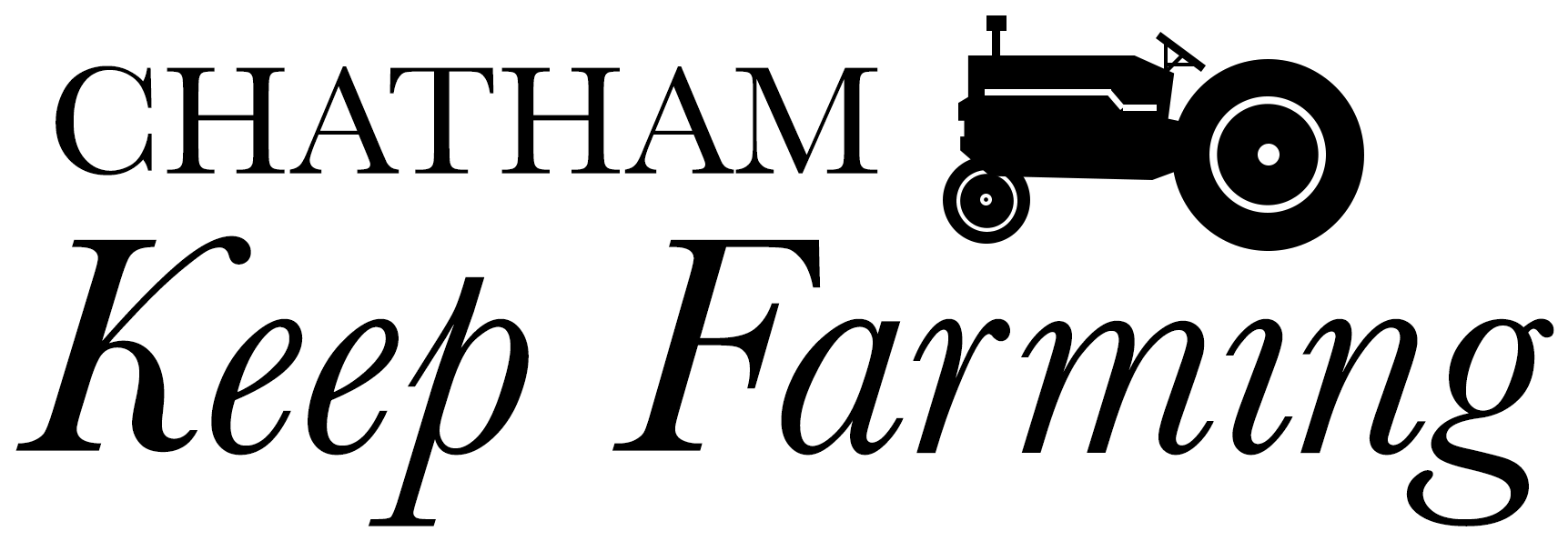Numbers quoted below are from the 2004 Keep Farming study and do not include all land and animals in the town.
There are about 33,500 acres in Chatham.
- Roughly one-half of the land is forested, 8,371 acres have an ag exemption, and 1,448 acres are protected land
- The number of acres being farmed ranges from 1.5 acres to over 1,300 acres
- The number of years that farmland has been in a family ranges from 5 to 135 years.
- Of the land being farmed, about one-half is owned by farmers and the other half is owned by individual landowners.
- Some farmers lease land from more than twenty landowners.
About Dairy Farms
- Two-thirds of Chatham’s active farmland, about 5,000 acres, is used for commodity dairy farming.
- There are six dairy farms in Chatham.
- Chatham’s dairy farms produce more than 17 million pounds of milk a year with a total value of over $2,500,000.
- Milk is New York’s leading agricultural product with milk sales accounting for over one-half of total agricultural receipts.
- Chatham dairy farmers are members of three cooperatives – Agri-Mark, Dairylea & NFO.
About Produce Farms
- There are currently three produce farms in Chatham, including one CSA.
- Of the 83 acres of tillable land used for vegetables and fruit:
- 36 acres are vegetables and herbs (44%)
- 30 acres are potatoes (36%)
- 15 acres are sweet corn (18%)
- 2 acres are melons and berries (2%)
About the Sheep
- There are three farms raising sheep in Chatham, with more than 1,400 sheep and lambs.
- Sheep milk is used to make cheese and yogurt; wool and yarn are sold, as are meat products.
About Horse Farms
- Horse farms are a growing part of Chatham’s agricultural picture. This parallels the trend in other farming communities in the Hudson River Valley.
- Horse farms contribute to our economy by breeding, foaling out, riding lessons,training and driving (harness/carriage).
About Alpaca Farms
- Chatham has an alpaca farm with more than 50 alpacas.
- Spruce Ridge Farm breeds alpacas and sells alpaca fiber.
“The number of farms nationwide declined by 1% between 1987 and 1997, while the land in farms declined by 4.3%. During the same period, Columbia County saw an 18% decrease in the number of farms and a 14% decrease in the amount of acreage being farmed.” – The Independent, April 23, 2004
“Keep Farming is an intensive two-phase, 18 month collaborative process. Glynwood piloted this program in Butler County, PA, originally and recently initiated a second pilot in Chatham, NY, in the upper Hudson Valley. Both communnities used the Keep Farming program to supplement their town’s comprehensive planning process.” – Kellogg Food and Society Networking Conference, Remarks by Judith M. LaBelle, President, Glynwood Center
“Throughout the United States, small and mid-size farms are disappearing at an alarming rate. In part, this is due to the rise of large scale, corporate agriculture, but it is also the result of escalating land values, competing land uses, low wholesale prices, financial barriers and lack of markets for produce from smaller farm operations.” – Keep Farming Program Overview, Glynwood Center
“New York farmland is being developed at an alarming rate. According to the United States Department of Agriculture, more than 130,000 acres of farmland were developed in New York between 1992 and 1997. During that period, New York State ranked 13th in the nation in the amount of farmland developed.” – American Farmland Trust, New York’s Farmland Protection Program, 2003 Fact Sheet
“Studies of towns in New York found that an average of 29 cents from every farm property tax dollar went to provide services to farm parcels, resulting in a tax surplus from farmland of 71 cents. Residences, on the other had, do not pay enough to offset their costs and require an additional 27 cents for every dollar of revenue they generate.” – American Farmland Trust

